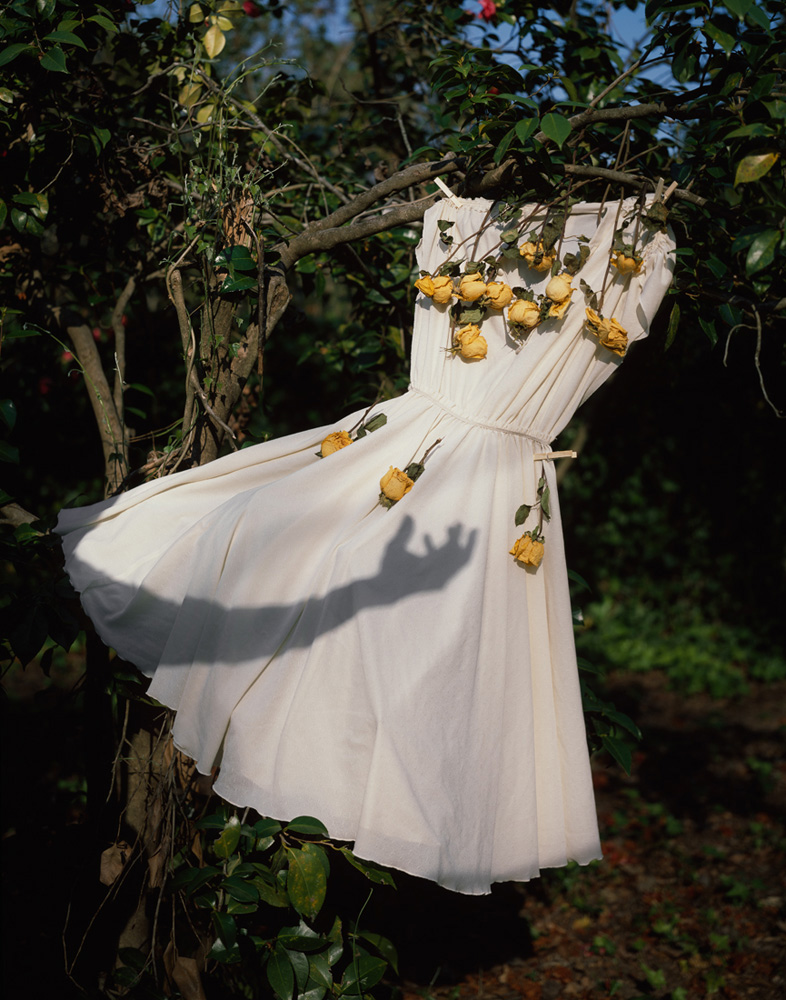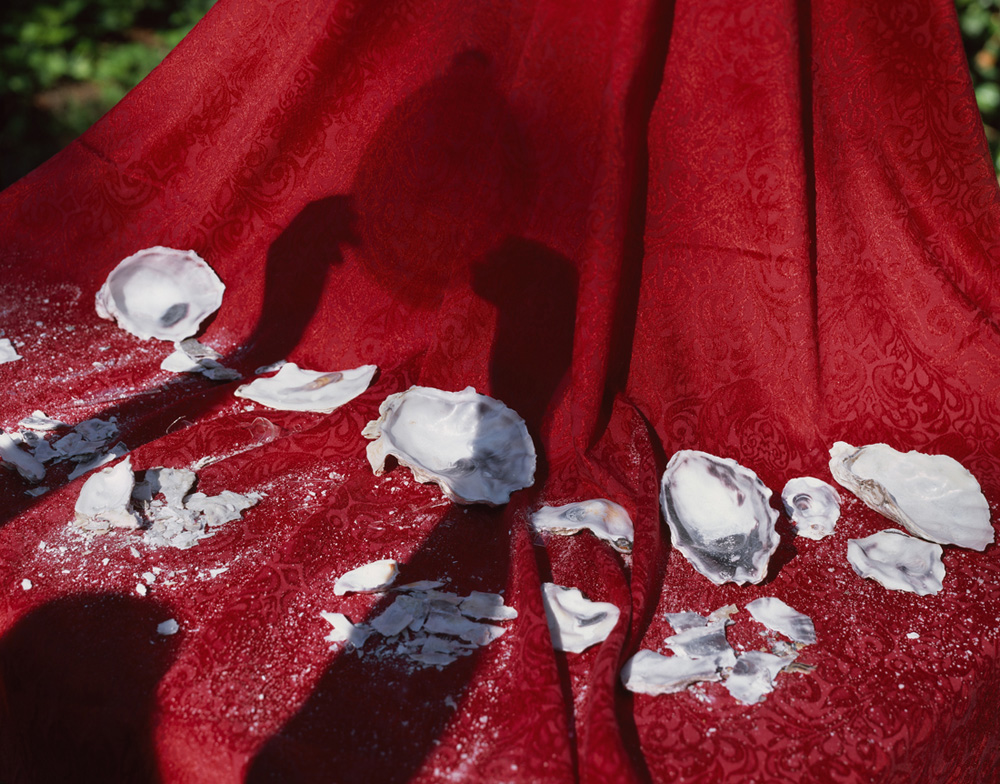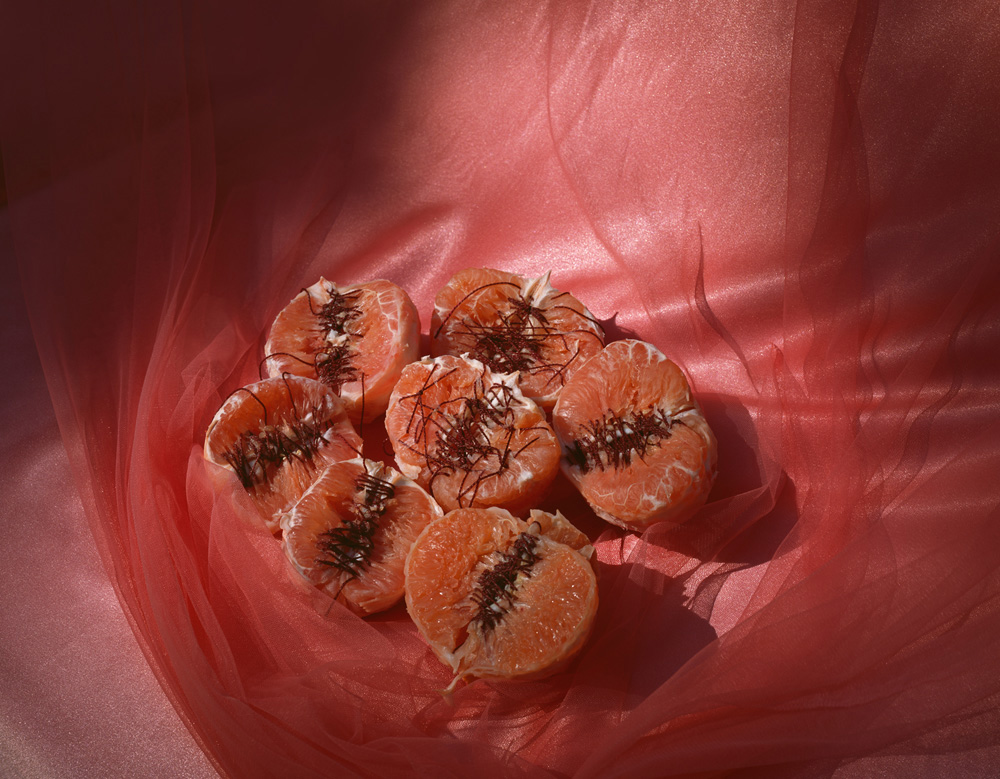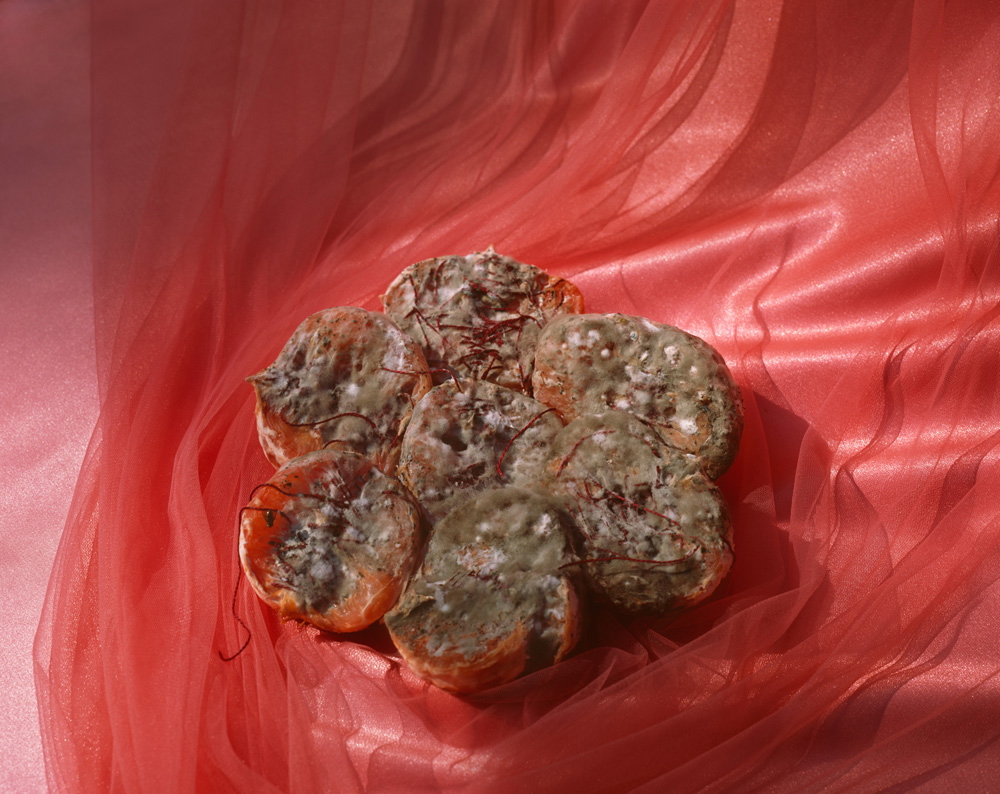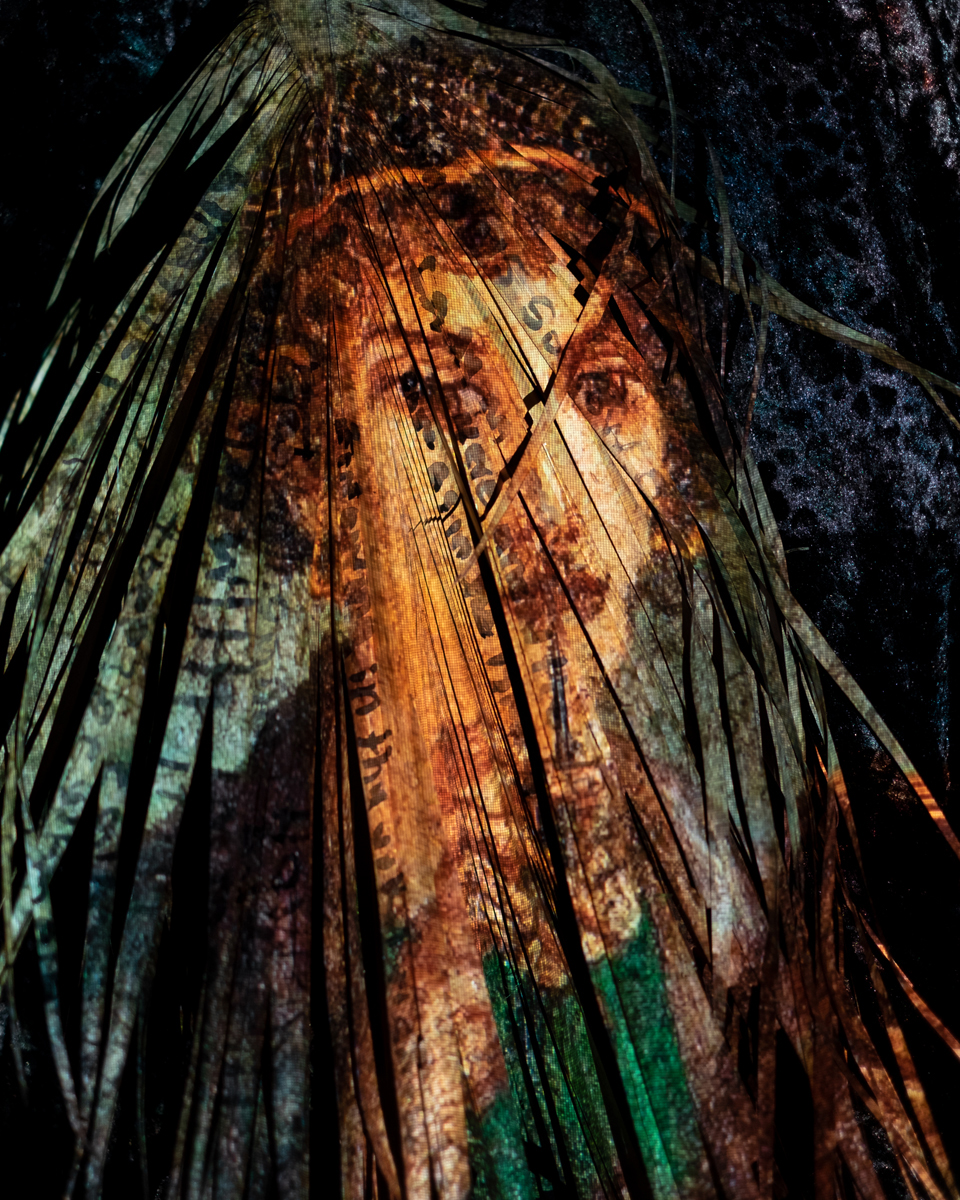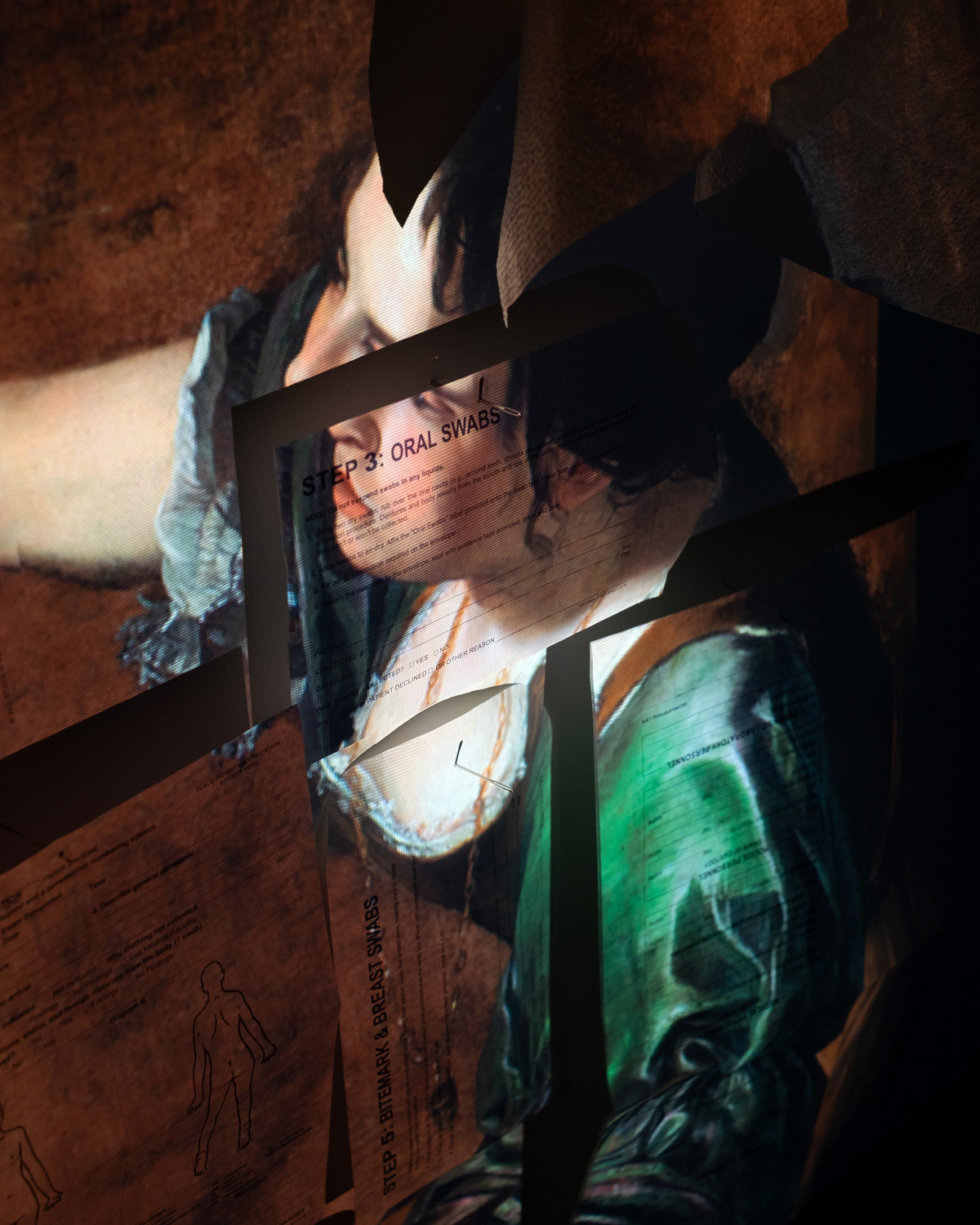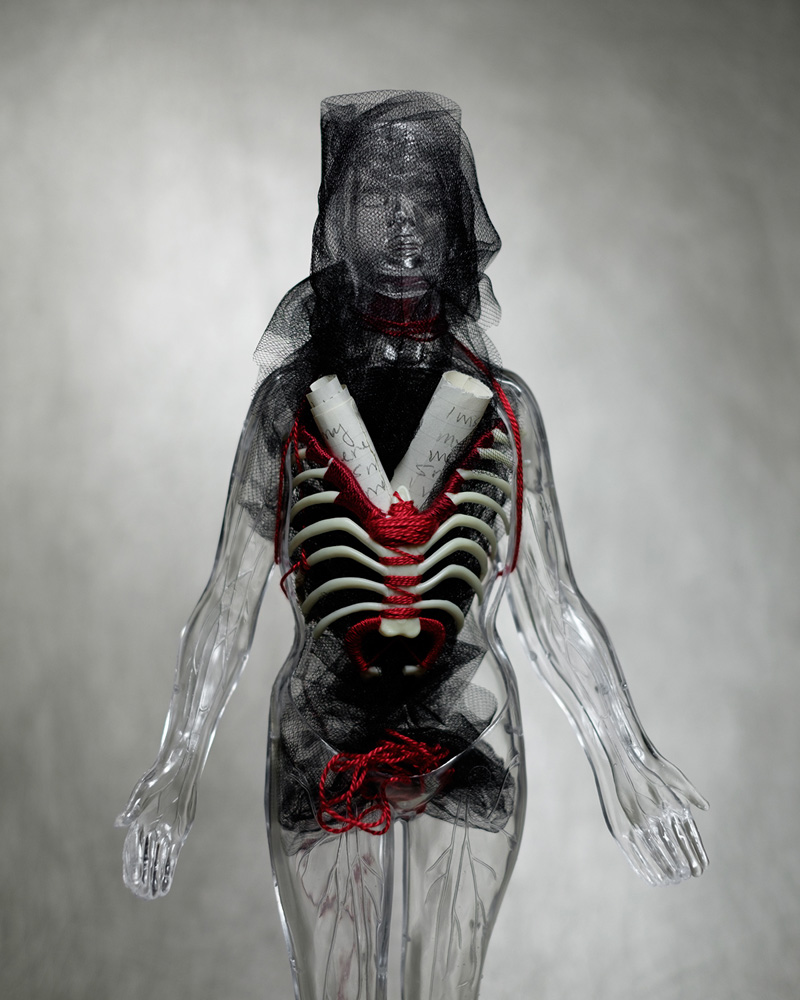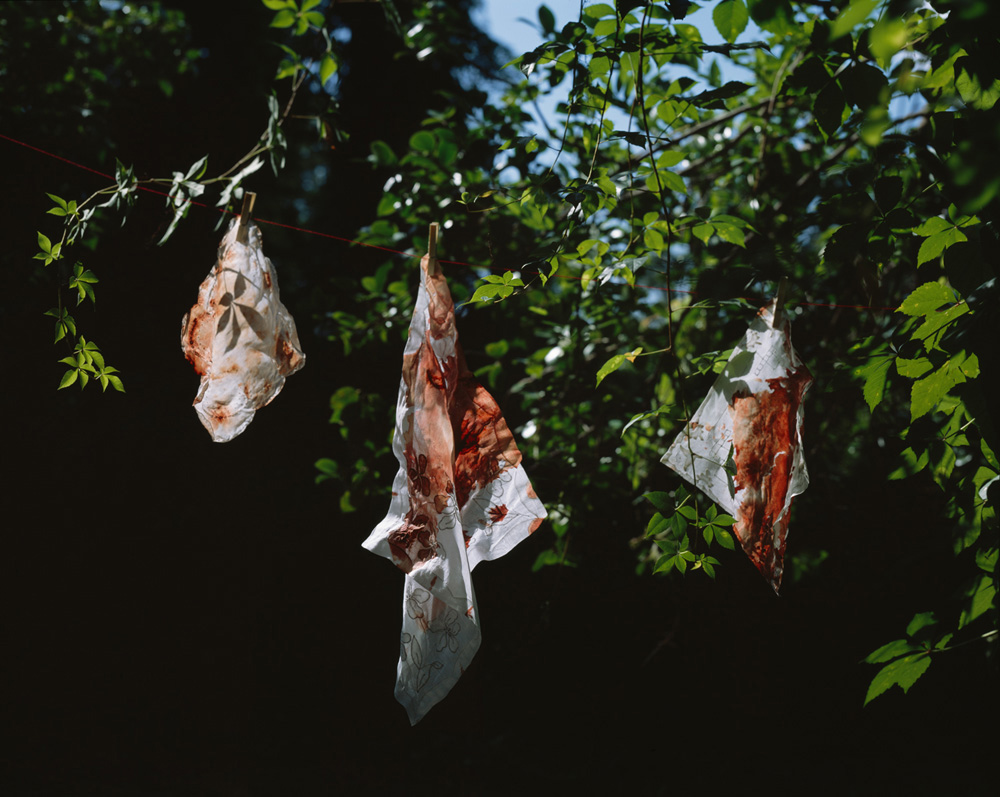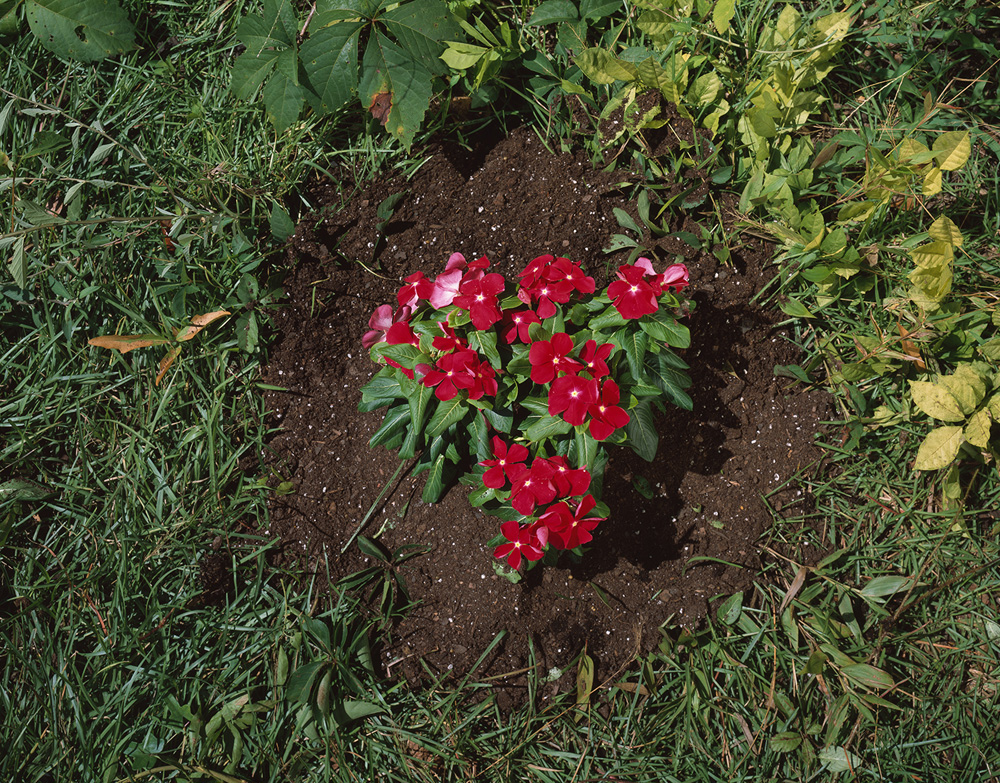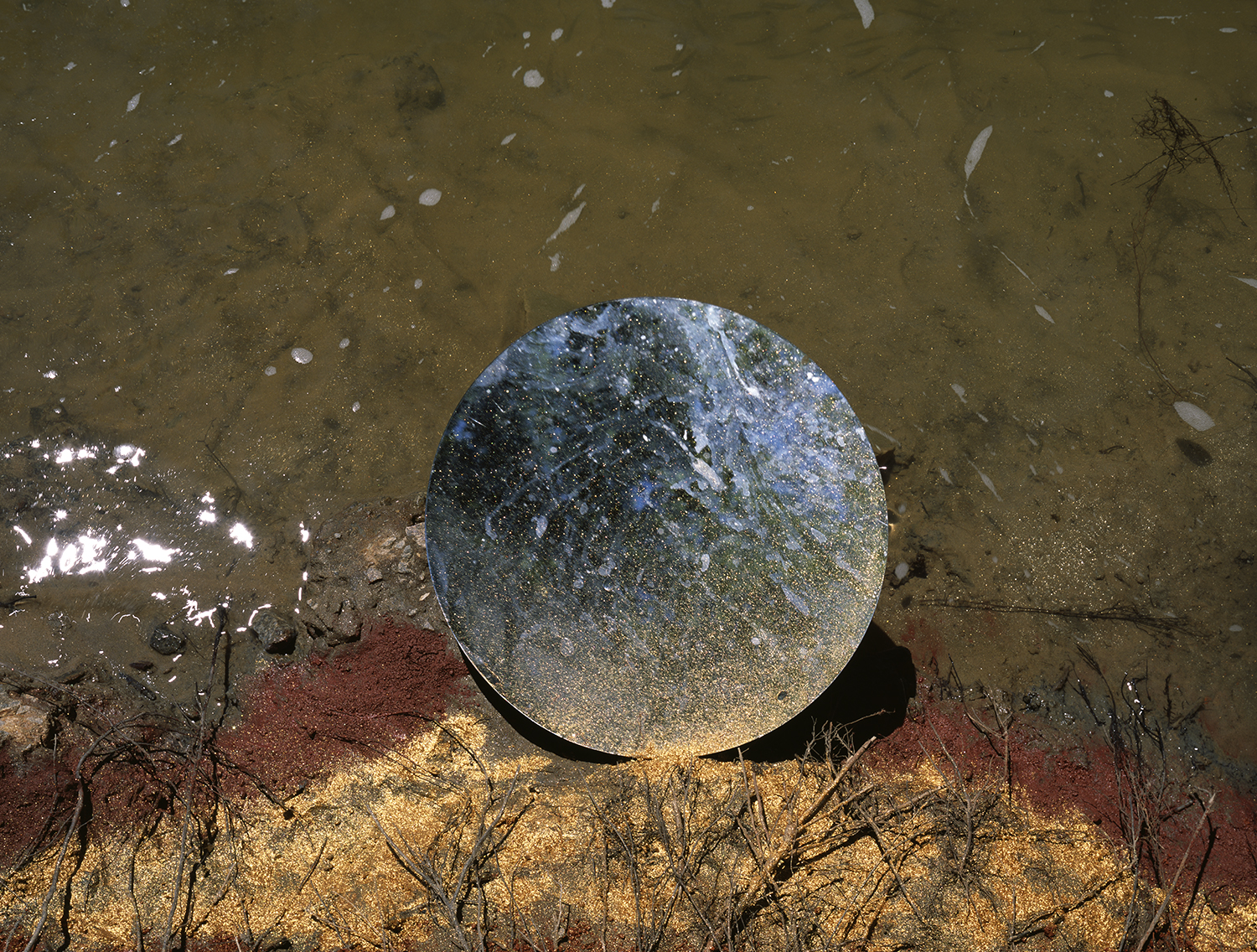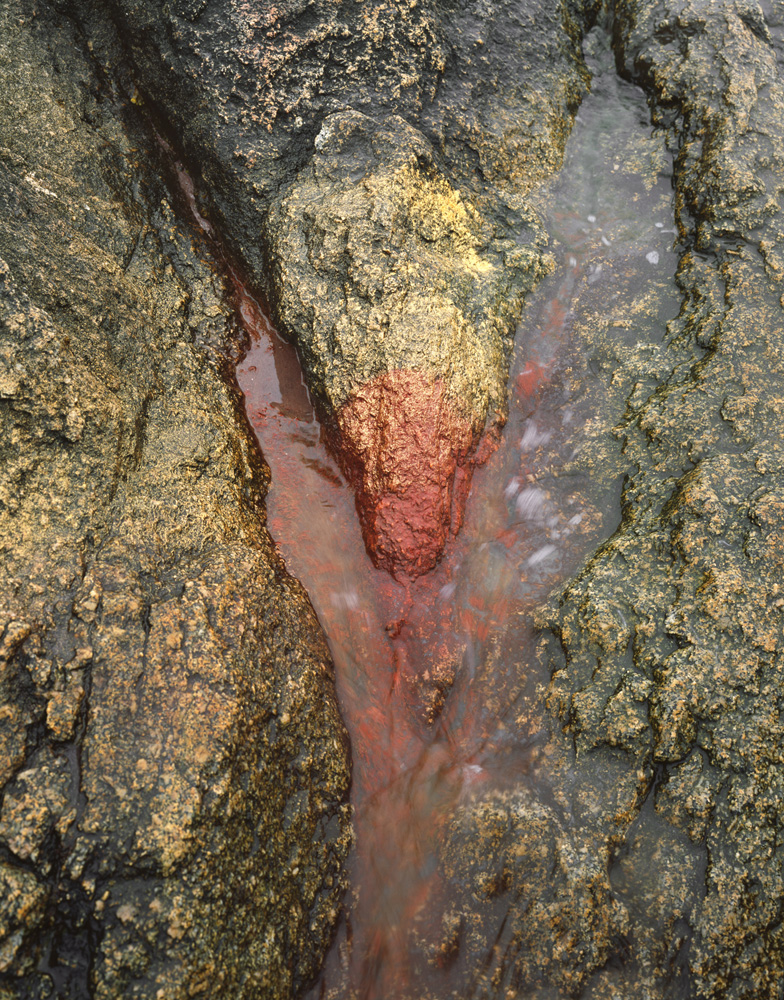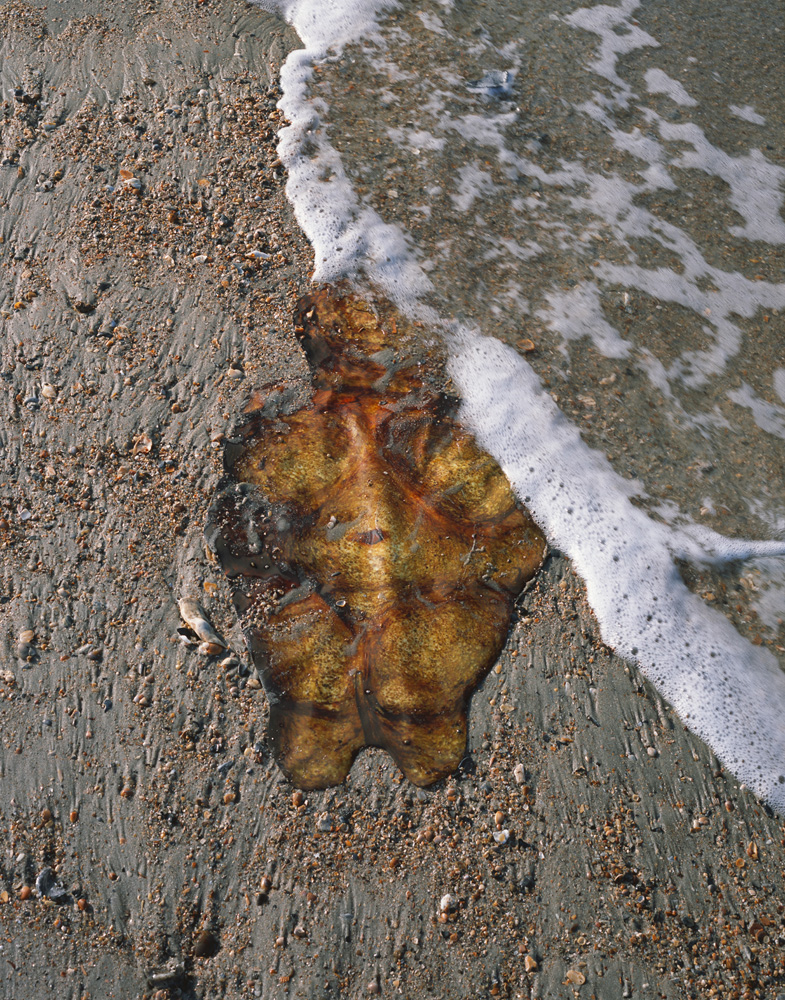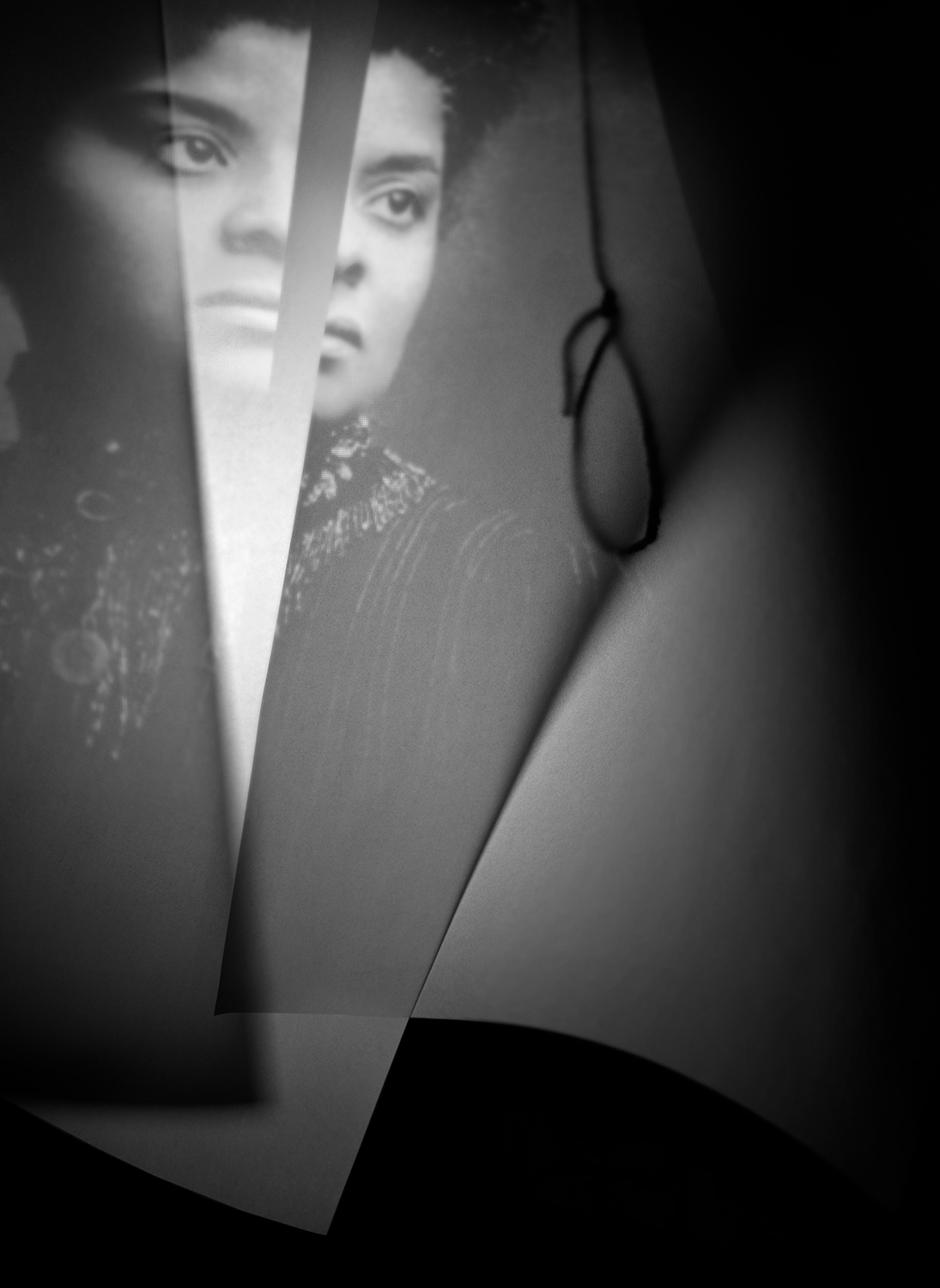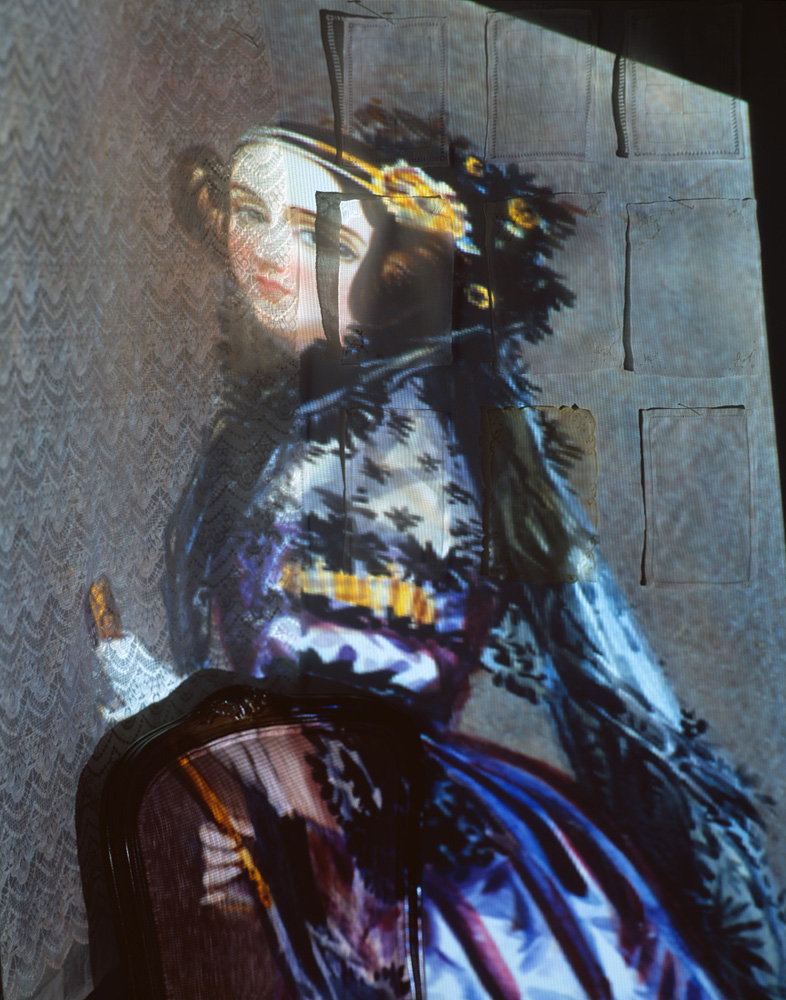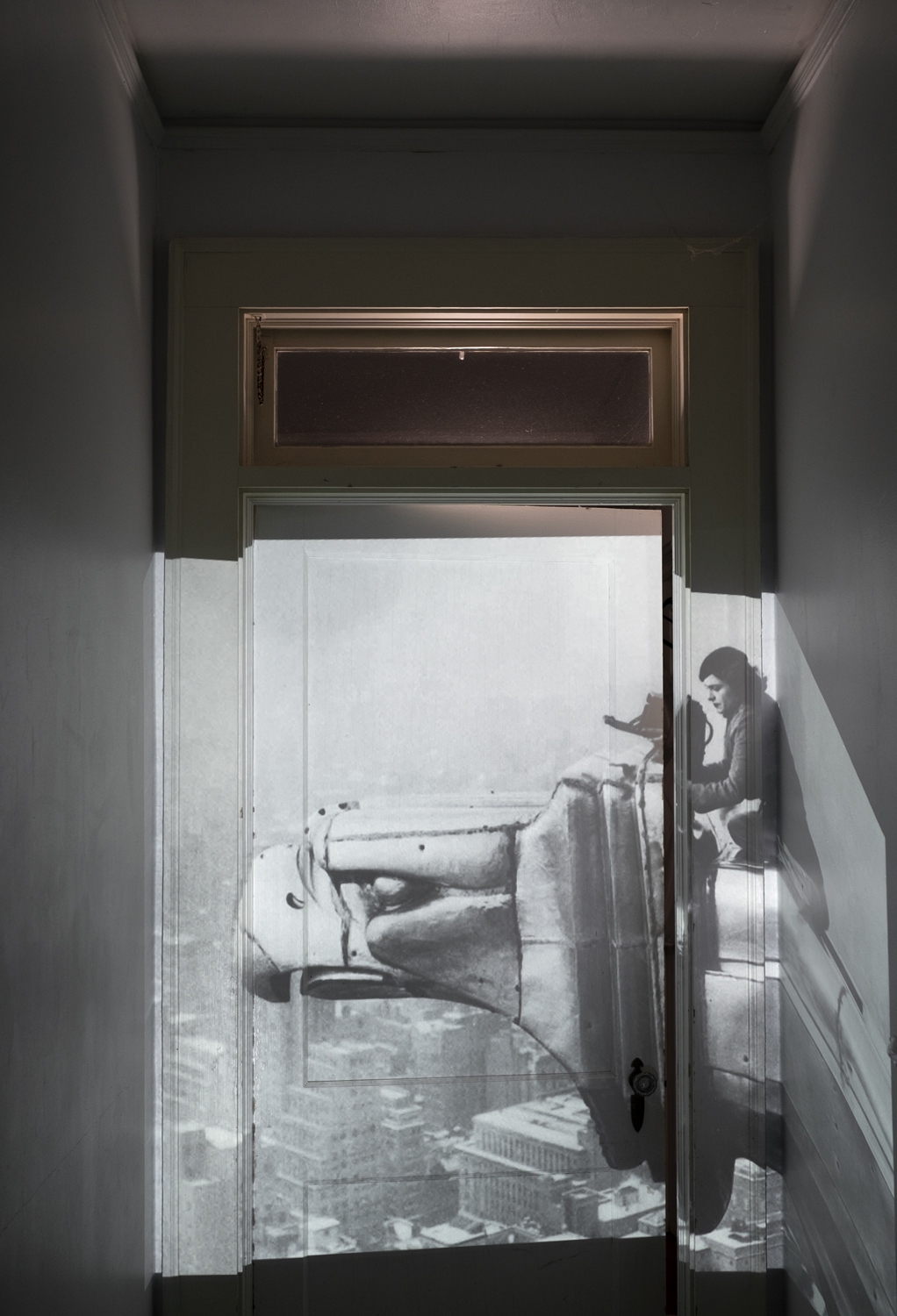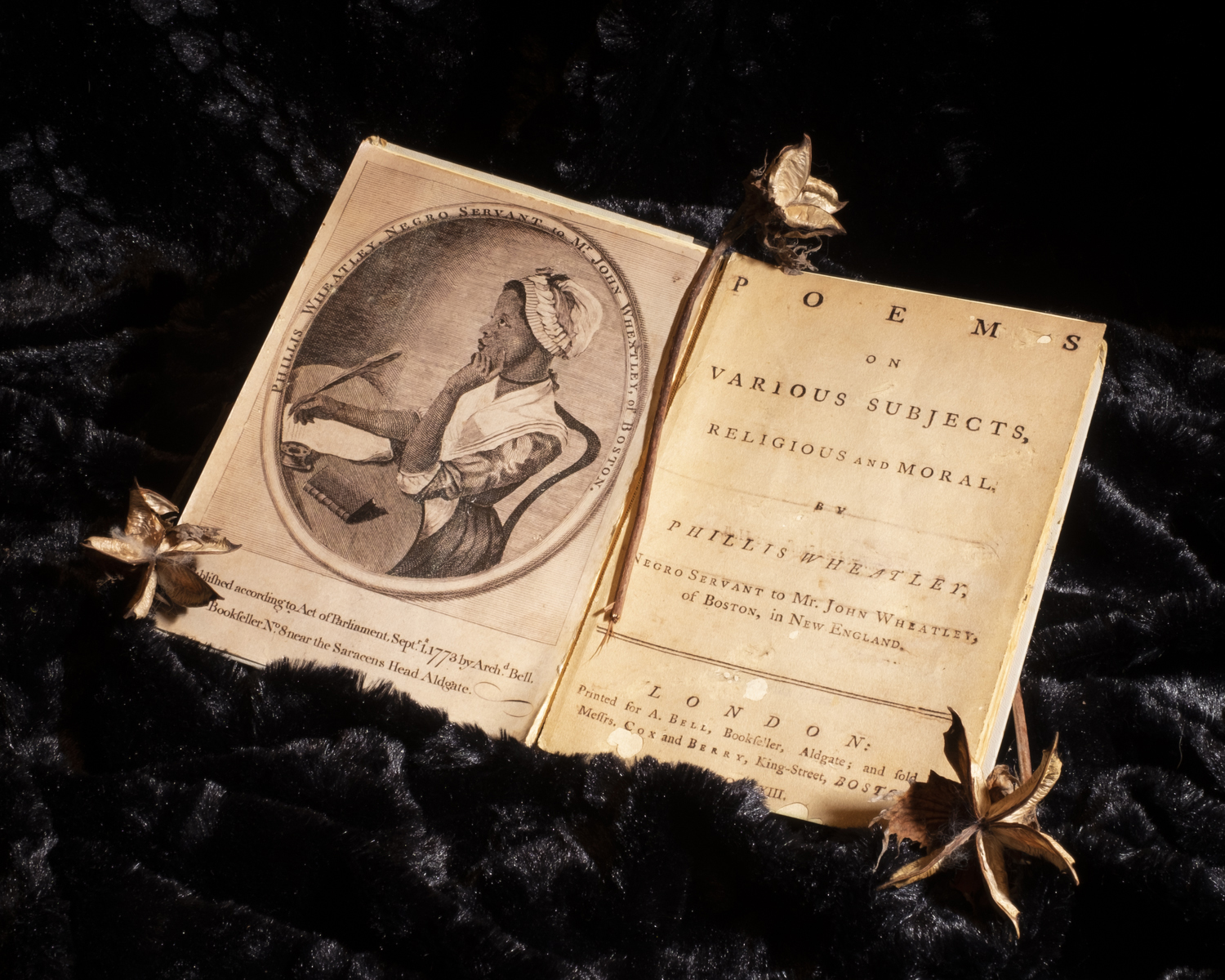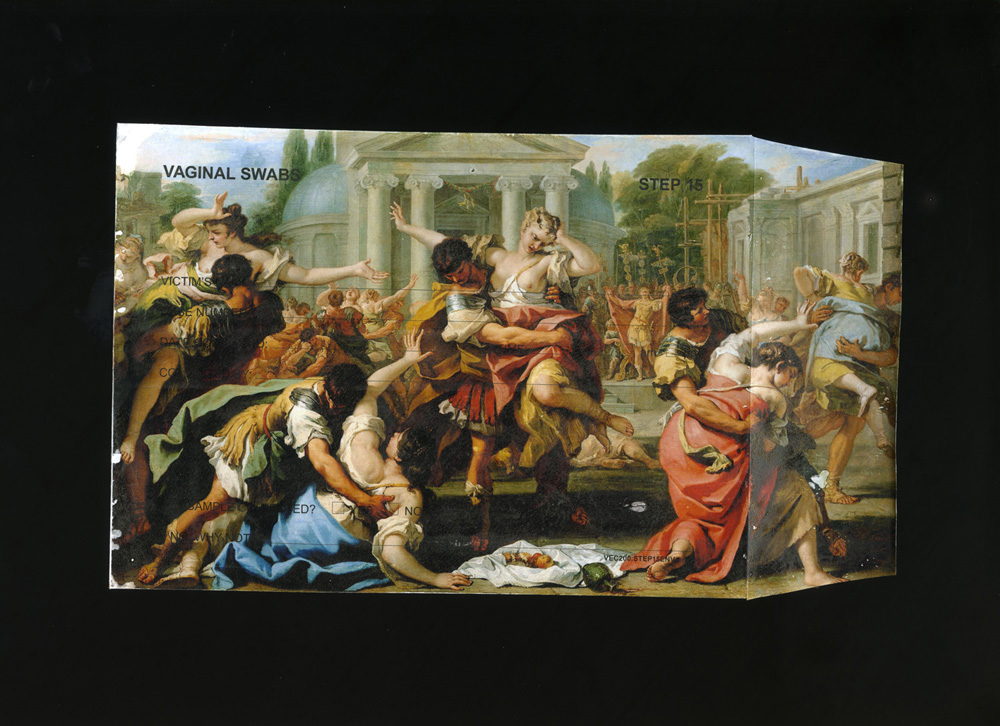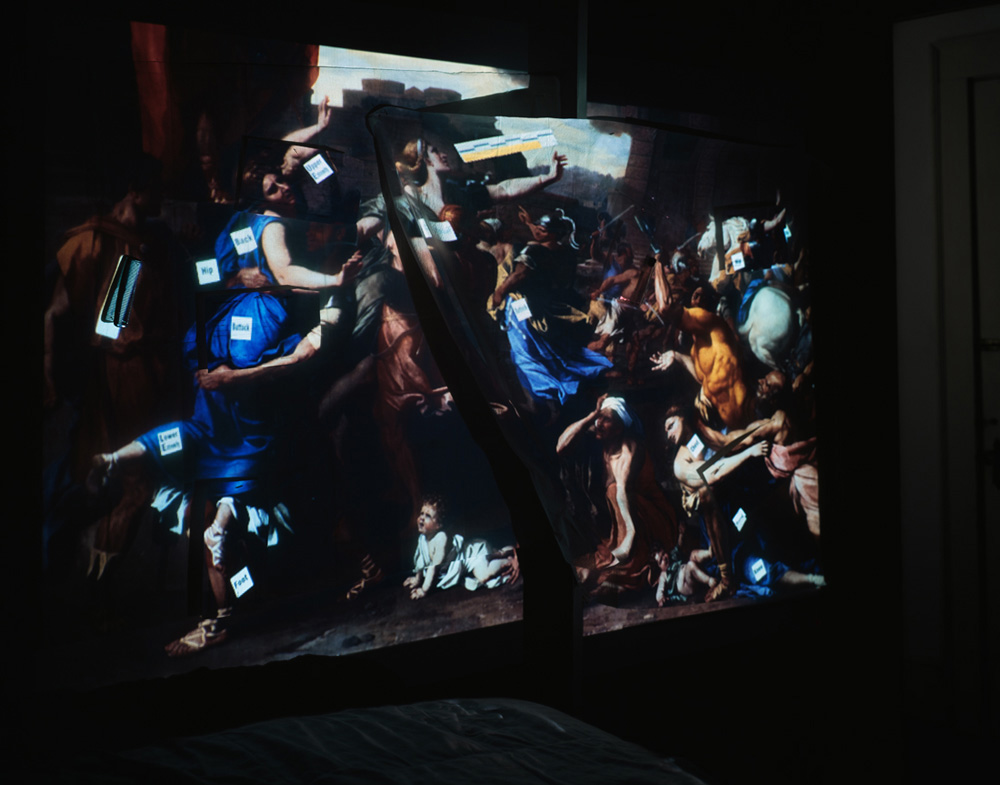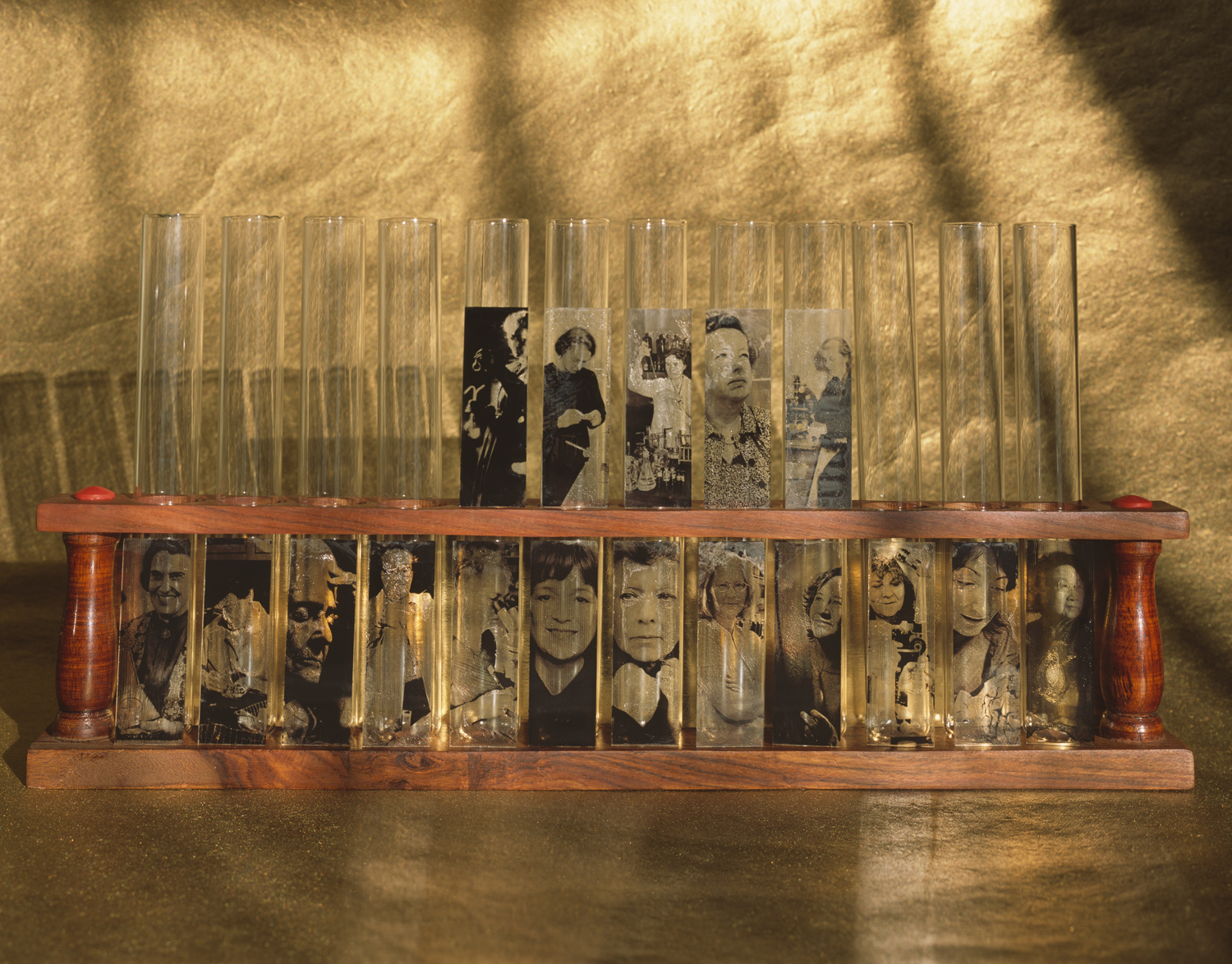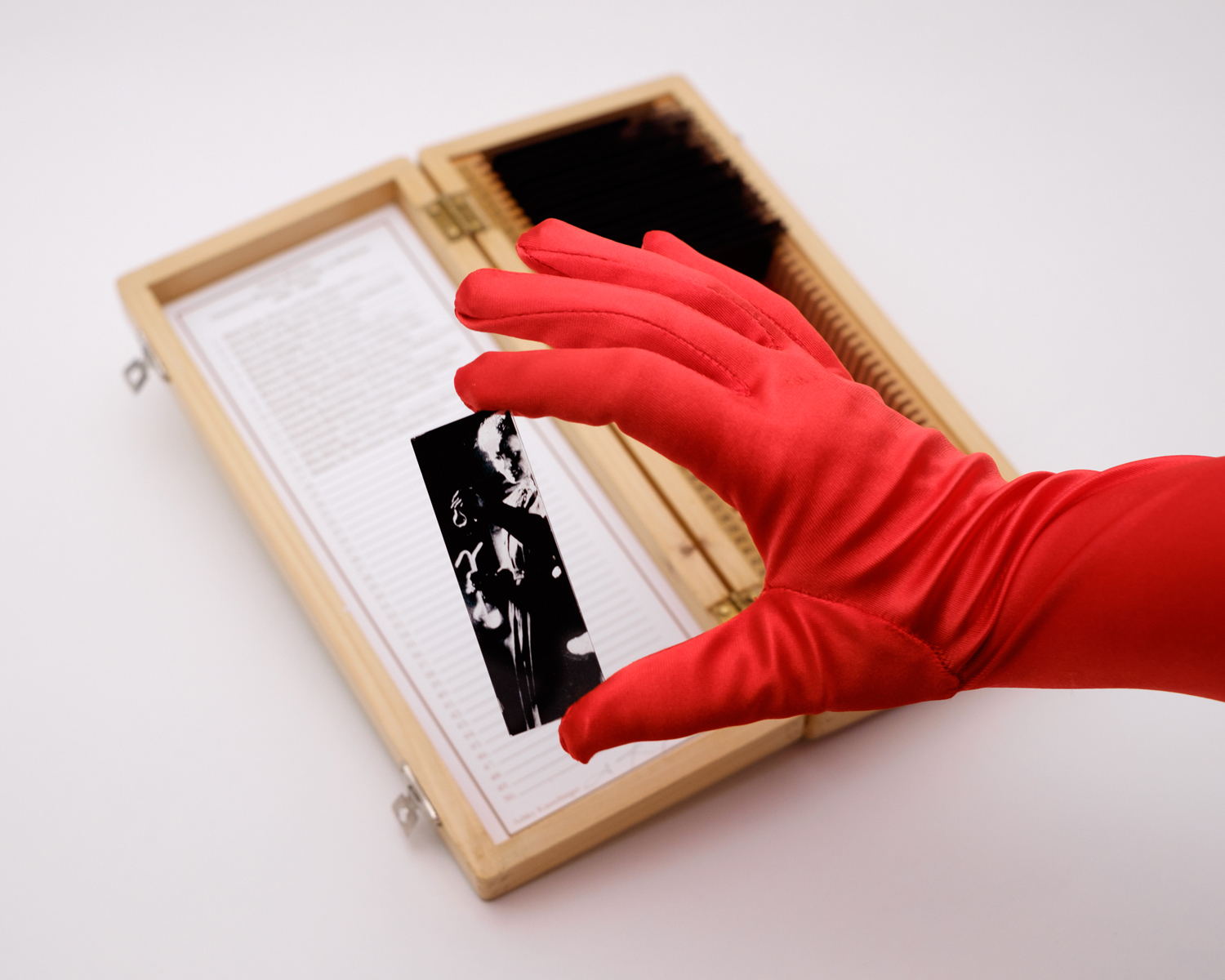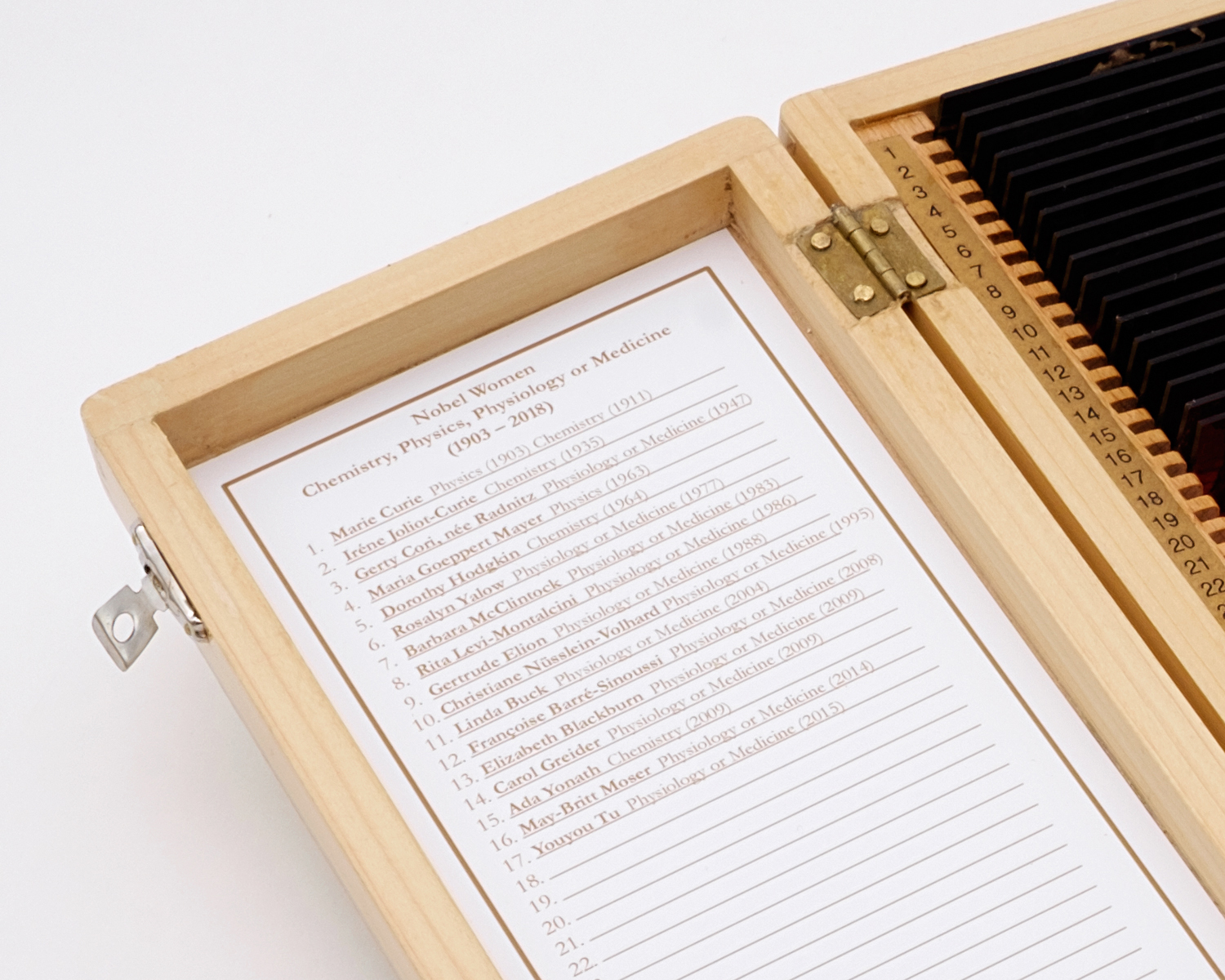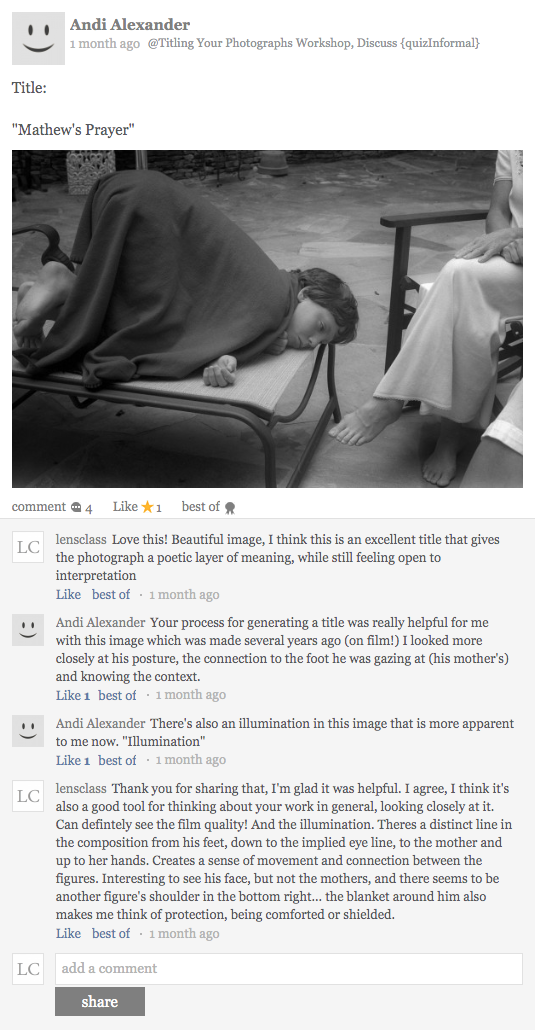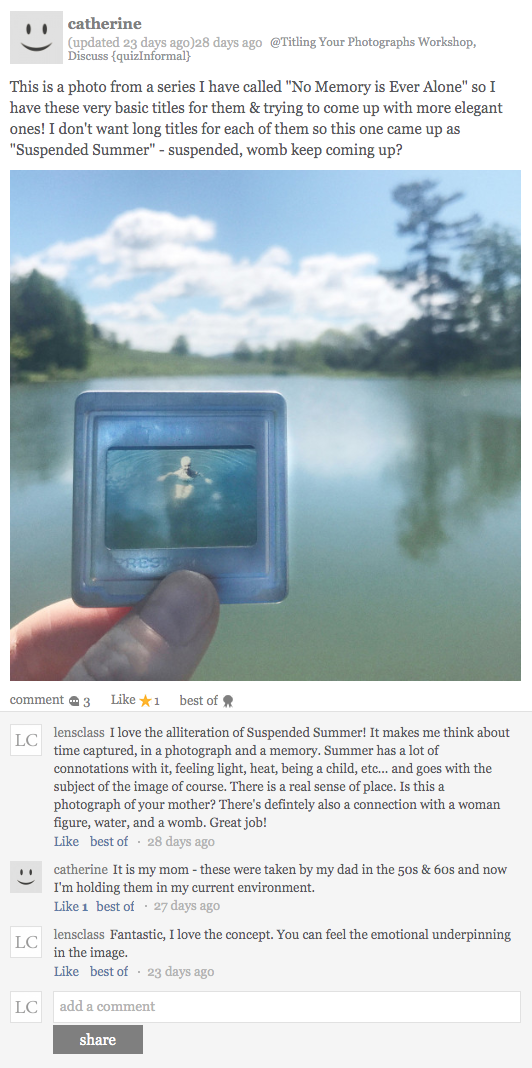Ashley Kauschinger: Cycles and Lensclass
Today, artist Allison Jarek interviews Ashley Kauschinger about two projects, one photographic: Cycles, and one educational: Lensclass.
Ashley Kauschinger is an artist that explores identity, social structures, and women’s voices. She received her BFA from Savannah College of Art and Design and her MFA from Texas Woman’s University. Her photographs have been exhibited nationally and internationally in venues such as the Light Factory and the Chiang Mai Art Museum. She has been published in Chinese Photography Magazine, PDN Photo Annual, and Lenscratch, among others. Her work is in the collections of Vanderbilt University and the Sir Elton John Collection.
Ashley is also the Founder of the online fine art photography education platform, Lensclass, and the online photo magazine, Light Leaked. Ashley has previously taught photography at University of South Carolina and Maine Media Workshops + College. She currently lives and works in Atlanta, GA.
Allison Jarek: Your series Cycles explores women’s history and female figures currently ranging from prehistory to the 1900’s. Could you tell us a little about your process and the role research plays in the creation of this work? How do you determine what historical and cultural figures to explore in your images?
Ashley Kauschinger: Cycles ties in-depth research with symbolic interpretation. Sometimes I am trying to create an illustration of history, sometimes an interpretation, building on a mythology of the past; sometimes I am influenced by my personal experiences related to an aspect of history to guide how to construct an image. With such a broad topic and time expanse, it has been an overwhelming part of the process to decide what to focus on. I can only make one image at a time, and a lot of reading and research goes into each one. I also haven’t been able to figure out how to make all of the research I have done visual yet. Some are easier to think of visual interpretations for than others, and I have been going through visual experimentation to find more language to broaden what I am able to interpret.
When I began, I started making work about what struck me, what I related to, and what I already knew the most about. For example, I had done a lot of research in the past about Hypatia. Because I love her, and because over 5 years ago I took my first swing at making this series, beginning with Hypatia and Marie Curie. That wasn’t successful at the time, but when I came back to the work 5 years later, I had a better idea of how it could work visually, and had a stock of some research that I had started then. After a year or so of working on the series, some chapters began to emerge. I started focusing my research and creating more images in each chapter to build them up. This is what I am still doing. The chapters are loosely: female figures, depictions of women in art and culture, fertility and the body, and violence against women.
Some of my favorite texts that I worked from were: Who Cooked The Last Supper: The Women’s History of the World by Rosalind Miles, The Guerrilla Girls’ Bedside Companion to the History of Western Art, Ain’t I A Woman and Feminism Is For Everybody by bell hooks, The Wandering Womb by Lana Thompson, Missoula: Rape and the Justice System in a College Town by Jon Krakauer, and Unmentionable by Therese Oneill
AJ: The use of projected images and shadows are featured prominently in this work. Could you speak a bit about this approach and the role it plays in this series?
AK: With the projected images, I wanted to create a sense of empty space, fragmentation, something being erased visually. I also wanted to incorporate, when possible, actual historical imagery of women throughout history, to create a new portrait of them within this context.
The shadows of especially hands are working similarly, though are also taking on a performative role in the narrative scene they are in… a body-less entity imposing itself on the scene. Sometimes rising up something forgotten, like the shadow of an astrolabe (a tool arguably invented by Hypatia in the image about her), or tearing apart the image, like the hands ripping the yellow wallpaper.
AJ: For viewers of your photographs that are not familiar with these subjects, what do you hope they learn? And what do you hope your audience learns about women of today through this lens on the past?
AK: To me I hope this series pokes a hole through history to see the connections between the contemporary lives of women and the underpinning structures that women have lived in for thousands of years. I want viewers to consider the similar structures women have lived within across time and culture, and how they cycle and repeat. The outcome of how it has affected women has sometimes manifested in different ways, but they are all really the result of patriarchal structures. There is a conscious and subconscious, deep rooted belief that women are worth less, are more disposable, are a problem that needs to be solved and controlled… through things like emotional and physical manipulation, isolation, and violence. While that is all a big part of the series, I always wanted to infuse some lightness and empowerment through featuring inspiring women throughout history. As well as my interpretation of Prehistory, and readings I did about historical speculations of fertility rituals, and the worship of women.
I have also been thoughtful about titles, to share some my intention for each image and the chapters I have put them into. Most of the titles are in two parts to help guide viewers’ understanding of what is going on. The first is a more metaphorical title that often references a symbolic aspect of the work, followed by a more clear descriptor and time period to contextualize the image. This text can teach viewers a bit about the research that I have done to create the image, and guide their own research if they wish to find out more about a certain image. I also think there is something that can be felt, emotionally and symbolically, in all of the images without the historical knowledge, that is up to the viewer to feel through their own interpretation.
AJ: You have also recently launched a fine art photography education platform called Lensclass. Tell us a little bit about the mission of Lensclass and what it offers to the photography community.
AK: Lensclass is online education for fine art photography. Students can watch self-paced lessons, do assignments, ask questions, and interact with me and the other students. I started by taking some of my most popular assignments and lectures from my time teaching at the University of South Carolina, to create the first three offerings: Breaking Artist Block, Titling Photographs, and Photography Foundations. You can read more about them here.
 For now, I have left traditional teaching in the university system. But I love to teach. I have so many lectures, assignments, research, education, and passion for teaching photography. I wanted to create an outlet for that, while also creating an affordable and accessible option for folks that can’t go to college for studio art or can’t go to an expensive fine art workshop, to get that information online. I feel like a lot of online education in regard to photography is mostly technical, and taught from a commercial standpoint. There aren’t as many resources that take a real contemporary studio art approach to photography, both conceptually and technically, available online. I hope that Lensclass will be able to provide that. In the future, I really want to partner with contemporary photographers to create workshops in their specialties and create an online destination for fine art photography education.
For now, I have left traditional teaching in the university system. But I love to teach. I have so many lectures, assignments, research, education, and passion for teaching photography. I wanted to create an outlet for that, while also creating an affordable and accessible option for folks that can’t go to college for studio art or can’t go to an expensive fine art workshop, to get that information online. I feel like a lot of online education in regard to photography is mostly technical, and taught from a commercial standpoint. There aren’t as many resources that take a real contemporary studio art approach to photography, both conceptually and technically, available online. I hope that Lensclass will be able to provide that. In the future, I really want to partner with contemporary photographers to create workshops in their specialties and create an online destination for fine art photography education.
Now through the end of April, I created the coupon code COVID for photo educators and their students to get 100% off all Lensclass courses to help with the sudden transition to online teaching. Thanks in large part to the fantastic Lauren Greenwald and Sara Fields, the admin fees for the Lensclass platform have been covered through the end of April. During which I can have unlimited sign ups for educators and students. If you sign up for a course, and would like to help support Lensclass, you can donate $5 on Venmo to @Ashley-Kauschinger
AJ: Who should take these classes and what do you hope they will learn?
AK: Lensclass is for anyone who is curious and passionate about fine art photography. The courses and workshops consider a spectrum of skill levels. So you could be a working artist who wants more inspiration with a workshop like Breaking Artist Block or Titling Your Photographs. Or you could be brand new to photography and want to start at the beginning with Photography Foundations. Photo educators that want to provide online content for their students, or share the content in their classes can also use Lensclass. I hope to continue building up offerings myself and in collaboration with other artists in line with this spectrum.
AJ: How can readers and photographers interested in Lensclass get started?
AK: Go to https://www.lens-class.com/ and register for a free account! On the home page, or on the courses page you can see our current offerings where you can enroll and get instant access to course materials.
Lensclass is formulated to be as much like an in-person course as possible, but with the flexibility of self paced online education. Access to instructors, streaming video lessons, and the course community act as the time you are going to class. You can also download PDFs of all the lectures, assignments, and exercises to keep forever when the class is finished.
Allison Jarek (b. 1989, Reno, NV) is an American photographer whose work explores themes such as man’s relationship with nature, identity, and personal journeys. She received her MFA in Photography from Texas Woman’s University in the spring of 2015 and her BFA in Photography from the Savannah College of Art and Design in 2011. Her work has been shown internationally, at venues such as SlowExposures, New Orleans Photo Alliance, the University of Central Florida, PhotoNOLA, and Clemson University, and featured in publications such as The Oxford American magazine, FotoFilmic, SHOTS Magazine, The Hand magazine, and South x Southeast Photomagazine. She currently lives in Atlanta, Georgia and serves as the Director for the nonprofit Illuminate Atlanta.
Posts on Lenscratch may not be reproduced without the permission of the Lenscratch staff and the photographer.
Recommended
-
Earth Week: Casey Lance Brown: KudzillaApril 25th, 2024
-
Tara Sellios: Ask Now the BeastsApril 6th, 2024
-
ALEXIS MARTINO: The Collapsing Panorama April 4th, 2024
-
Emilio Rojas: On Gloria Anzaldúa’s Borderlands: The New MestizaMarch 30th, 2024
-
Artists of Türkiye: Eren SulamaciMarch 27th, 2024

